Model InSystem 002
optical separator
up to 20
object
per second
up to 36
tons
per hour
The Optical Sorter - Line utilizes advanced AI technology for automatic material recognition, processing up to 100 frames per second. This high-speed system can handle up to 20 objects per second, sorting up to 36 tons per hour. The sorting is performed using high-pressure jets of compressed air, precisely separating materials based on customizable criteria.



PURITY LEVELS
ai + nir
camera
input size up
to 250 мм
From 85 000 €
2nd Generation
Recycling robots
Robotic waste sorting system
1 object / second
objects / sec
24/7
365 days / year
Recycling robots lower sorting costs by automating manual picks while increasing purity and recovery. This high-speed system can handle up
to 60 objects per minute. The 2nd generation of recycling robots can be installed in 1 day.
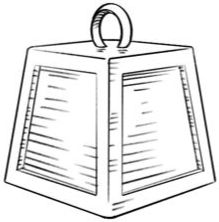
lifts up
to 1 kg

Ai + NiR camera
(optional)

input size up
to 250 mm
Purchase price —
45 000 €
85 000 €


Rent for test –
You can always fire him!
The minimum probation period is 6 months.












20+
Types of sorted
materials

plastic bottles

oil bottles

milk bottles

detergent bottles

tin cans

tetrapacks

glass bottles
wood chips

chipboard

mixed stone

iron ore
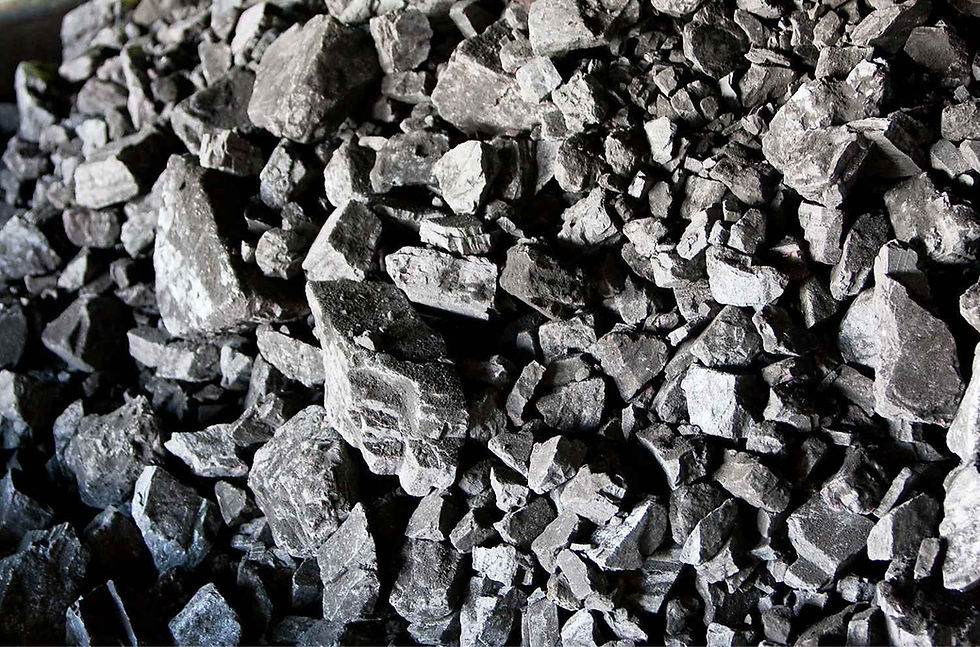



-
Dull-dirty-dangerous work
-
Salary and social contribution taxes
-
Seasonal work
-
Lack of control
-
Low effectiveness, need to be educated
-
Thievery
Less labour. More automation.
More sorting
Less waste

-
Active 24/7
-
Remote monitoring
-
Algorithm optimization
-
Cost effectiveness
-
Low lease costs
-
No fraud

Less labour. More automation.
More sorting -
Less waste



One day installation
Deploy InSystem recycling robots at your sorting plant as an independent system or alongside people.
The plant layout stays the same.

Installation
in 1 day
Deploy InSystem recycling robots at your sorting plant as an independent system or alongside people. The plant layout stays the same.
Detailed overview







Special offers

Automatically updating algorithm

Updated image processing algorithm
Data
on sorting results

24/7
Monitoring system
1. Information from the cameras is sent to a unified control centre for remote monitoring and service.
2. The sorting algorithms are optimised automatically as neural networks are trained and the volume of sorted waste increases.

Updated image processing algorithm
Data
on sorting
results

24/7
Monitoring system
1. Information from the cameras is sent to a unified control centre for remote monitoring and service.
2. The sorting algorithms are optimised automatically as neural networks are trained and the volume of sorted waste increases.
Cloud statistics
The cloud platform delivers complete visibility into your recycling operation across all shifts. Advanced analytics, real-time alerts and interactive dashboards give you clear insights into composition tracking. Designed for multi-plant scale and easy integration,
the platform supports faster decisions, tighter control and improved recovery outcomes.

REAL TIME
STATISTICS

REMOTE CONNECTION

HIGH-SPEED
AI UPDATE

CLOUD MONITORING
Timeline


2017
Company incorporation.
First concept designs
2018
In-house technology development.
The 1st generation prototypes
of AI recycling robots
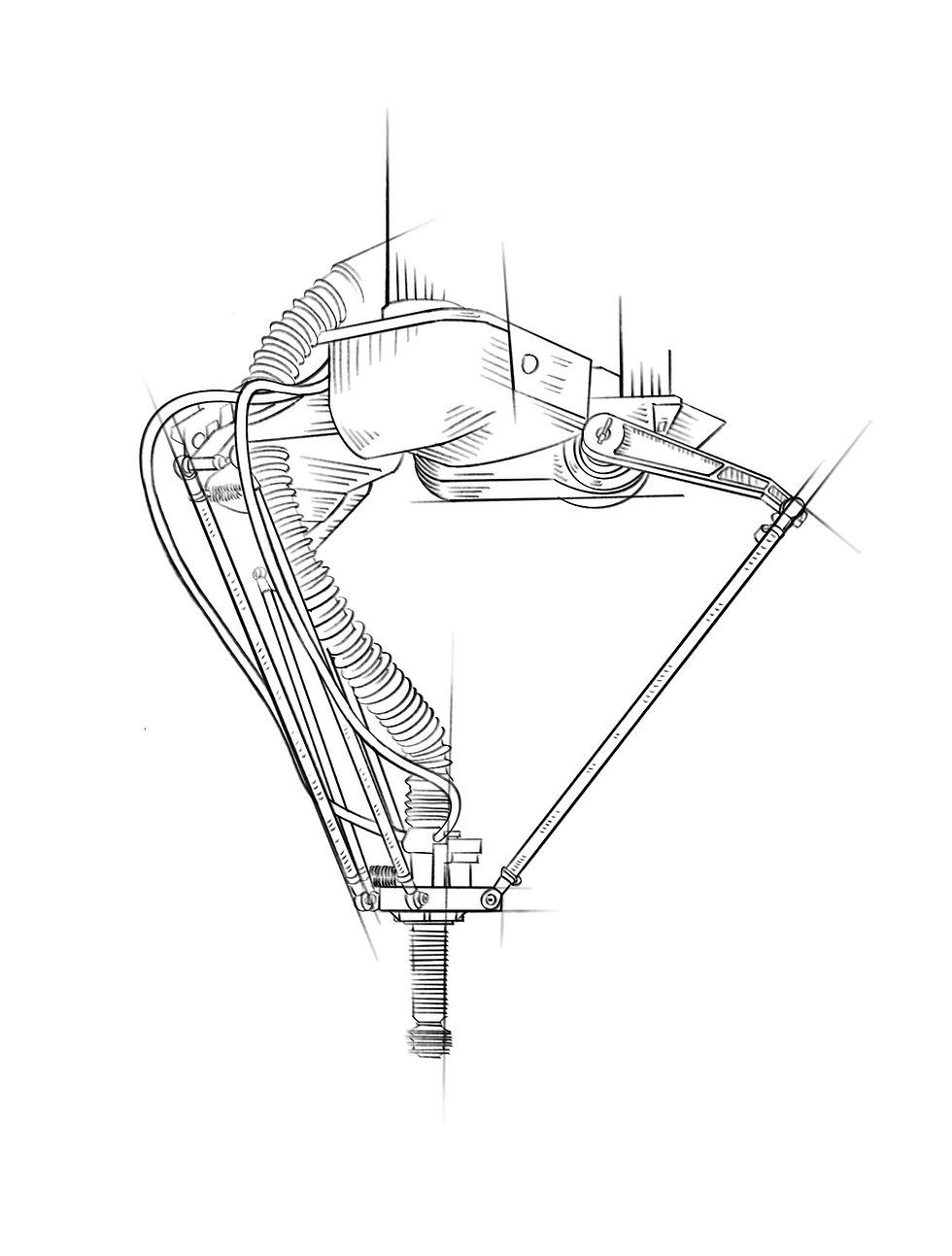

2020
Implementation of 6 robots at the plant.
Start of automated operation
2021
Scaling.
Robotic sorting installation
across 5 factories in different cities


2022
Launch of the monitoring system at factories.
Data collection and analysis of waste generated
by 6 million people
2023
Recycling robots upgrade.
Development of concepts and designs
for the 2nd generation of recycling robots
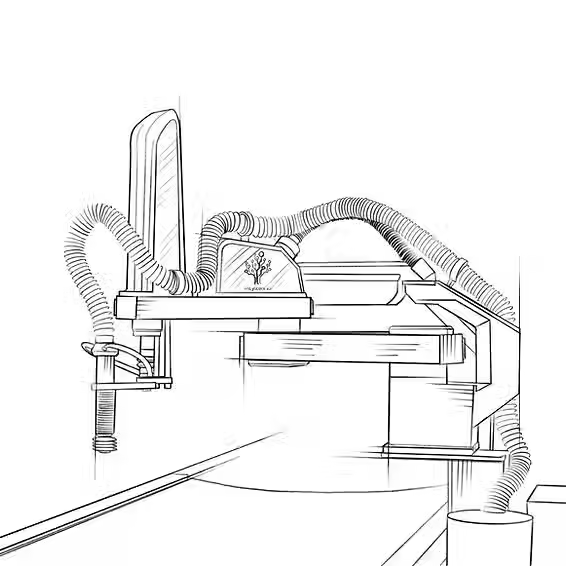

2024
Company incorporation
in the Netherlands
2025
Recycling robots release in November




Ai-feature
sorting
What's the difference between 1st and 2nd generation?
We kept the best features from the first generation and built more efficient version.
The new generation of recycling robots are easier to install, faster in operation and more cost-effective to integrate into your sorting line.

1st
generation

2nd
generation
Price
135 000 euro
85 000 euro 45 000 euro
CONSTRUCTION
Requires manual inspection after impacts
High impact resistance
INSTALLATION
10-15 days
1 day
maintenance
Requires manual service
Self-cleaning
processing speed
1 object / sec
1 object / sec

plastic bottles

oil bottles

milk bottles

detergent bottles

tin cans

tetrapacks

glass bottles
20+
Types of sorted
materials
1 object / sec
24/7
365 days/
year
Recycling robots lower sorting costs by automating manual picks while increasing purity and recovery. This high-speed system can handle up to 60 objects per minute. The 2nd generation of recycling robots can be installed in 1 day.



lifts up
to 1 kg
Ai + NiR camera
input size up to 250 мм
Purchase price
—
45 000 €
85 000 €
Rent for test –
You can always fire him!
The minimum probation period
is 6 months

2nd Generation
RECYCLING Robots
Robotic waste sorting system



2024
Company incorporation
in the Netherlands

2023
Recycling robots upgrade.
Development of concepts and designs
for the 2nd generation of recycling robots

2022
Launch of the monitoring system
at factories.
Data collection and analysis
of waste generated by 6 million people

2021
Scaling.
Robotic sorting installation
across 5 factories in different cities

2020
Implementation of 6 robots at the plant.
Start of automated operation

2018
In-house technology development.
The 1st generation prototypes
of AI recycling robots

2017
Company incorporation.
First concept designs



Detaled review
Timeline
What's the difference between 1st
and 2nd generation?
We kept the best features from the first generation and built more efficient version.
The new generation of recycling robots are easier to install, faster in operation and more cost-effective to integrate into your sorting line.
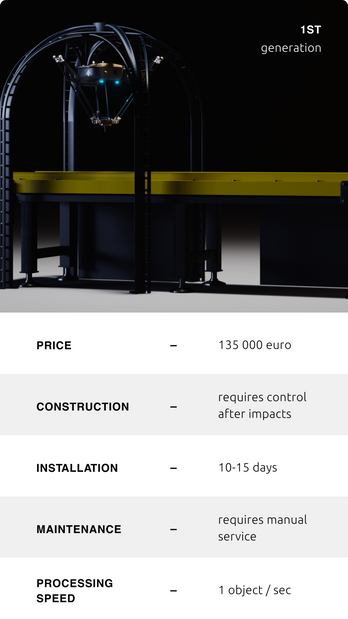
Сloud statistics

The cloud platform delivers complete visibility into your recycling operation across all shifts. Advanced analytics, real-time alerts and interactive dashboards give you clear insights into composition tracking. Designed for multi-plant scale and easy integration, the platform supports faster decisions, tighter control and improved recovery outcomes.

REALTIME
STATISTICS

REMOTE CONNECTION

HIGH-SPEED
AI UPDATE

CLOUD MONITORING

Triangular conveyor
The fracture on the conveyor enables efficient separation of light and heavy objects.
As the mixed flow passes over the angled section, lighter objects that were previously compressed within the stream are lifted and slide upward, separating naturally from the heavier ones.

separation

FLOW OPTIMIZATION

Ultimate speed camera
The high-speed camera and Ai provides up to 100 frames per second object analisys.
The high resolution and speed of capture ensure that even the most complex objects are examined in detail, providing reliable data for optimising production.

5 SEC RESPOSE TIME

4 METERS /
SEC

FAST EXPOSITION
Statistics

The high-speed camera and Ai provides up to 100 frames per secondobject analisys. The high resolution and speed of capture ensure that even the most complex objects are examined in detail, providing reliable data for optimising production.

REALTIME
STATISTICS

REMOTE CONNECTION

HIGH-SPEED
AI UPDATE

CLOUD MONITORING
Up and down separation
Up and down separation - depends on the sorting factory design.
Both direction installation is possible on demand.



Сombining separators into a line maintains sorting speed, ensures continuous sorting, and saves space in the workroom.
Сombining separators into a line maintains sorting speed, ensures continuous sorting, and saves space in the workroom.
Design and construction
This modular design allows for easy integration into existing production lines and can be configured in a series, with each unit sorting specific fractions and passing remaining materials to the next separator. The robust frame and adaptable support structure ensure stability and flexibility in various industrial settings.

CONSTITUENT
MATERIAL
Frame
Steel
Support structure
Steel, stone
Conveyor belt
High-strength rubber
Design and construction
The modular design of InSystem recycling robots enables smooth integration with various conveyor lines and waste streams. Built for industrial durability, each recycling robot combines a steel and aluminium structure with high-strength components for stable, long-term operation. Designed for easy maintenance, the robots deliver reliable performance and scalability for evolving recycling needs.
Component
material
Frame
Steel
Support structure
Steel, aluminium
Conveyor belt
High-strength rubber

Technical details
and specifications
The InSystem Recycling Robot (SCU: 0105) is a high-performance unit for automated waste sorting. Equipped with industrial-grade cameras, spectral sensors, and advanced AI recognition, it identifies material, shape and colour with up to 99% accuracy. Each frame is processed in just 0.01 seconds, allowing the robot to sort up to 3,600 items per hour with over 95% recycling efficiency.
BASIC PARAMETRES
Power consumption 2.5 kW
Capacity 1700 - 3600 picks / h
FRACTIONS
Up to 12
separate fractions
Input fraction size <150 mm
CONVEYOR
High-frequency technology
Conveyor speed
0.2 - 1 m / s
CAMERA
High-precision analysis at 200 frames per second
Parameters
Significance
Overall dimensions
850х820х800 mm
Minimum and maximum size
of sorted objects
0-250 mm
Power consumption
2,5 kW/h
Operating temperature range
from -10
to +50 °C
Weight
48 kg
Compressed
air requirements
8 bar,
200 L/min
Technical details
and specifications
The Optical Sorter - Line features an advanced self-calibration system for optimal performance under varying conditions. Its proprietary software enables remote monitoring and real-time adjustments, while the modular design allows for easy customization to meet specific industry requirements without complete system replacement.
BASIC PARAMETRES
Capacity
36 000 kg/h
Power consumption
2.5 kW
FRACTIONS
Up to 1
separate fractions
Input fraction size <150 mm
CONVEYOR
High-frequency technology
Conveyor speed
4-5 m/s
CAMERA
Highly precise
360 analysis
Parameters
Significance
Overall dimensions
4300х1100х1100 mm
Minimum and maximum size
of sorted objects
0-250 mm
Power consumption
2,5 kW/h
Operating temperature range
from -20 to +50 °C
Weight
2500 kg
Compressed
air requirements
8 bar, 2000 L/min
Technical details
and specifications
The InSystem Recycling Robot (SCU: 0105) is a high-performance unit for automated waste sorting. Equipped with industrial-grade cameras, spectral sensors, and advanced AI recognition, it identifies material, shape and colour with up to 99% accuracy. Each frame is processed in just 0.01 seconds, allowing the robot to sort up to 3,600 items per hour with over 95% recycling efficiency.
BASIC PARAMETRES
Power consumption 2.5 kW
Capacity 1700 - 3600 picks / h
FRACTIONS
Up to 12 separate fractions
Input fraction size <150 mm
CONVEYOR
High-frequency technology
Conveyor speed 0.2 -1 m / s
Camera
High-precision analysis at 200 frames per second
PARAMETER
Specification
Overall dimensions
850х820х800 mm
Minimum and maximum size of sorted objects
0-250 mm
Power consumption
2,5 kW/h
Operating temperature range
from -10 to +50 °C
Weight
48 kg
Compressed
air requirements
8 bar, 200 L/min


user-friendly interface
reliability and ease
of maintenance

cloud access

quick installation
in 1 day


user-friendly interface

reliability and ease of maintenance

cloud access

quick installation
in 1 day
Service

The InSystem team provides responsive technical support to keep your recycling robots operating without interruption. Our specialists deliver quick diagnostics and professional solutions to any technical issue, helping minimise downtime and maintain consistent performance. We are always available for remote assistance, consultations and on-site configuration when needed.

The InSystem team provides responsive technical support to keep your recycling robots operating without interruption. Our specialists deliver quick diagnostics and professional solutions to any technical issue, helping minimise downtime and maintain consistent performance. We are always available for remote assistance, consultations and on-site configuration when needed.

RECYCLING Robots
Learn more about recycling robots

Learn
more about recycling robots


Book a demo

Receive a tailored assessment showing how our technology can improve your key performance metrics

Integrate InSystem recycling robots to enhance your business

Book a demo

Receive a tailored assessment showing
how our technology can improve your
key performance metrics

Integrate InSystem recycling robots
to enhance your business
Design and construction
The modular design of InSystem recycling robots enables smooth integration with various conveyor lines and waste streams. Built for industrial durability, each recycling robot combines a steel and aluminium structure with high-strength components for stable, long-term operation. Designed for easy maintenance, the robots deliver reliable performance and scalability for evolving recycling needs.
Component
material
Frame
Steel
Support structure
Steel, stone
Conveyor belt
High-strength
rubber



























